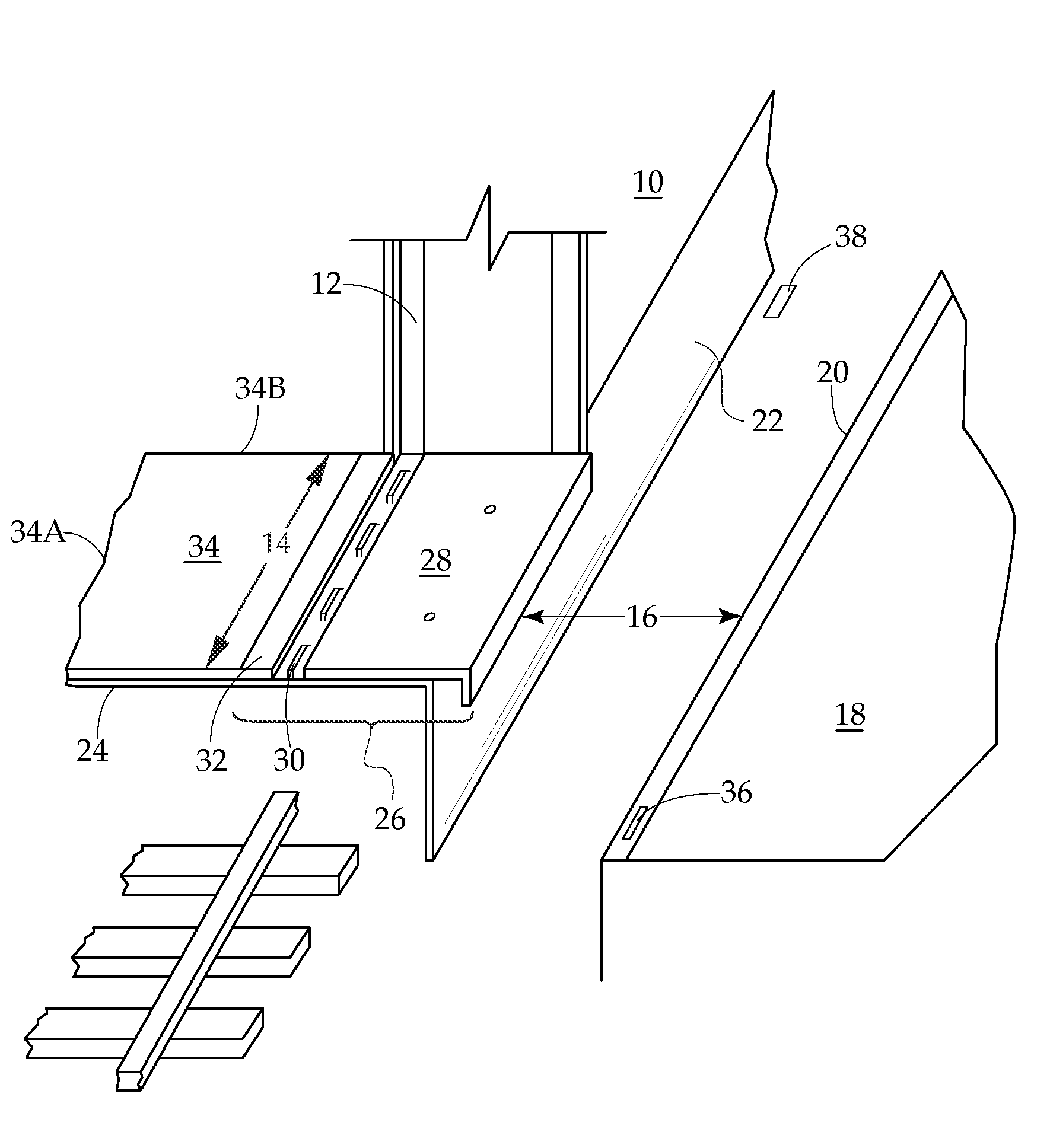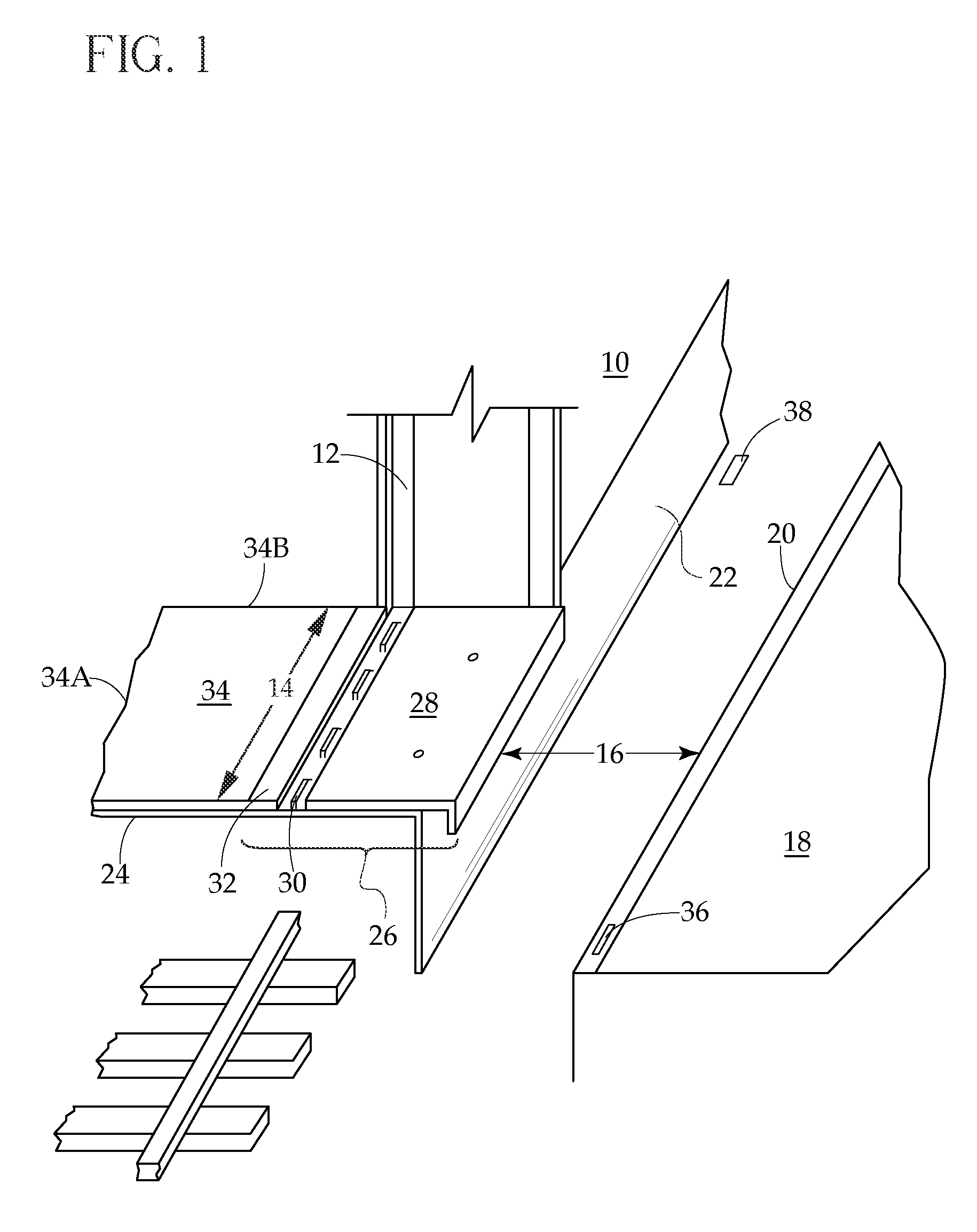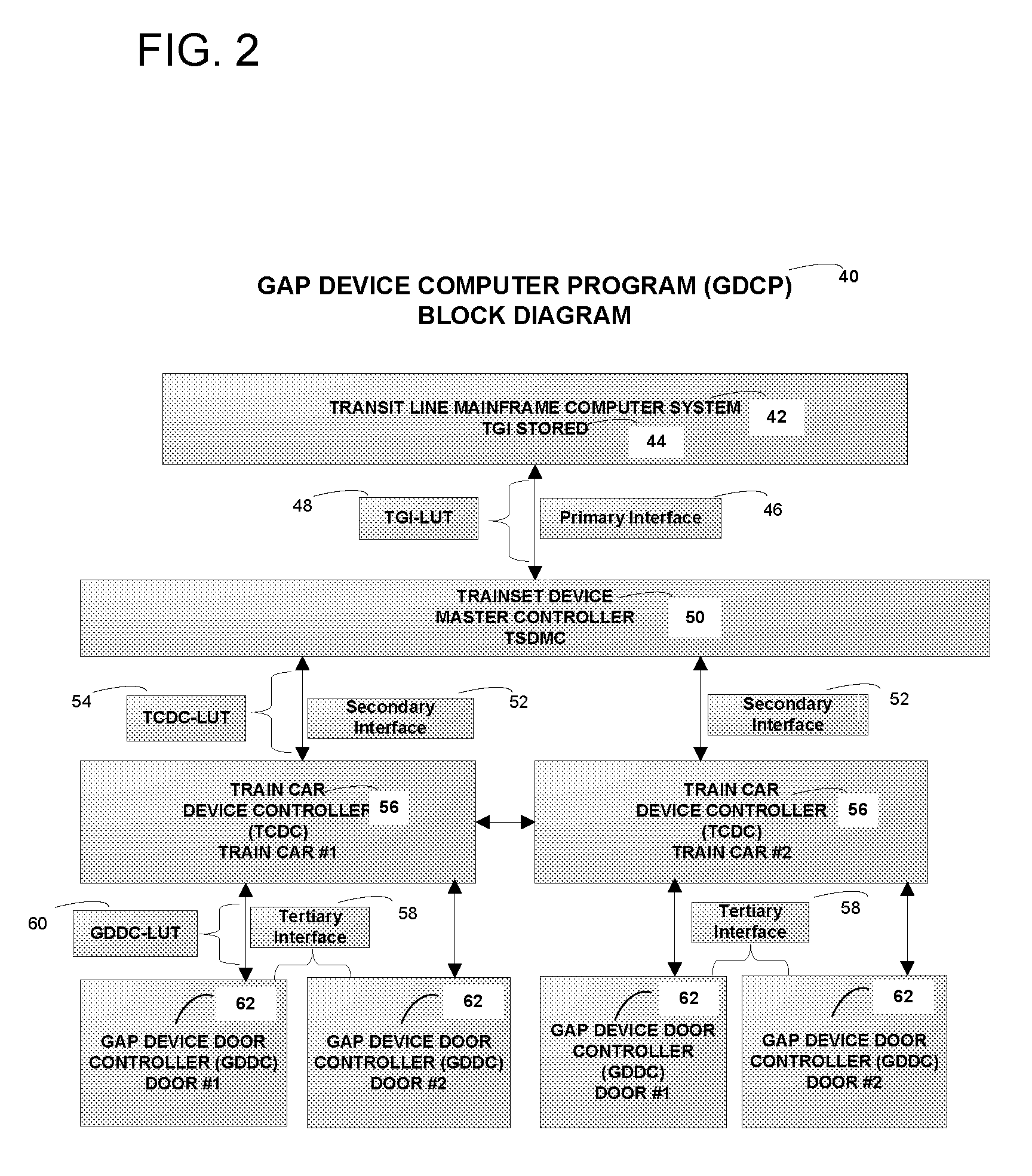Train-to-platform gap mitigator
a technology of platform and train, which is applied in the direction of railway stations, locomotives, railway lines, etc., can solve the problems of complex problem and its attendant solution, insufficient functional analysis and formulation, and inability to achieve the goal of train lines, so as to minimize every horizontal gap and facilitate the goal of the train line
- Summary
- Abstract
- Description
- Claims
- Application Information
AI Technical Summary
Benefits of technology
Problems solved by technology
Method used
Image
Examples
embodiment 216
[0293]FIGS. 22-23 disclose another preferred embodiment 216, that is, a variation of the aforesaid seventh plate structure now comprising a second slidable member 218 with its second slidable device 222, positioned below the plate component 184 of the present invention's device and to work in conjunction with said plate component 184, and to be incorporated within the frame 194 hereinabove described.
[0294]A second slidable member 218 is disclosed comprised of the following components: a structure having generally a U-shape 220; a plurality of said second slidable devices 222; a connecting shaft 226 appropriately fitted through a slotted opening 224 of each said second slidable device 222, and a structure having generally an inverted U-shape 228.
[0295]Preferably, there shall be two structures having generally said U-shape 220 to be incorporated within the second slidable member 218.
[0296]Each of the dual U-shaped components 220 forming a part of the second slidable member 218 is loca...
embodiment 238
[0311]FIGS. 24-27 disclose another preferred embodiment 238, that is, a further variation of the aforesaid seventh plate structure now comprising a third slidable member 240 with its third slidable device 244, positioned below the plate component 184 of the present invention's device and to work in conjunction with said plate component 184, and a separate structure 254 positioned above said plate 184, and all to be incorporated within the frame 194 hereinabove described.
[0312]A third slidable member 240 is disclosed comprised of the following components: a structure having generally a U-shape 242; a plurality of said third slidable devices 244; a connecting shaft 248 appropriately fitted through a slotted opening 246 of each said third slidable device 244, and a structure having generally an inverted U-shape 250.
[0313]Preferably, there shall be two structures having generally said U-shape 242 to be incorporated within the third slidable member 240.
[0314]Each of the dual U-shaped com...
PUM
 Login to View More
Login to View More Abstract
Description
Claims
Application Information
 Login to View More
Login to View More - R&D
- Intellectual Property
- Life Sciences
- Materials
- Tech Scout
- Unparalleled Data Quality
- Higher Quality Content
- 60% Fewer Hallucinations
Browse by: Latest US Patents, China's latest patents, Technical Efficacy Thesaurus, Application Domain, Technology Topic, Popular Technical Reports.
© 2025 PatSnap. All rights reserved.Legal|Privacy policy|Modern Slavery Act Transparency Statement|Sitemap|About US| Contact US: help@patsnap.com



